In this article, I will explore the riveting world of banjos, discovering the nuanced characteristics that define this unique instrument. Primarily, we’ll delve into one of the most fundamental questions: How many strings does a typical banjo have?
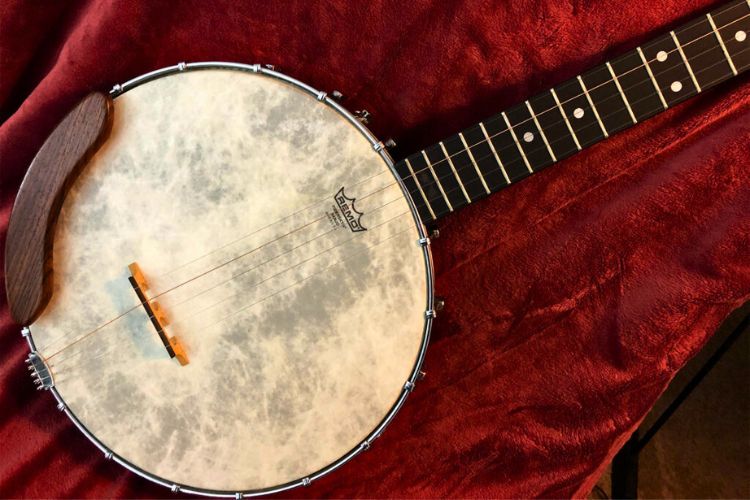
I’ll also discuss the historical variations, standard models, and the influence of string count on the banjo’s distinctive sound.
Contents
🎶How many strings does a typical banjo have?
A standard, or “typical,” banjo most often has five strings. This classic design includes four long strings and a shorter fifth string that starts at the fifth fret, providing a high “drone” sound typical to the banjo.
However, it’s important to note that there are variations. Some banjos can have four, six, or even more strings. These variations depend on the style of music, tradition, or the player’s preference. Nonetheless, the unique tone of the five-string banjo remains a defining sound in many music genres.
🎶How many strings does a banjo have for beginners?
For beginners, the number of strings on a banjo can vary. A five-string banjo is the most traditional choice and the most common among beginners. This is due, in large part, to its common use in bluegrass and country music.
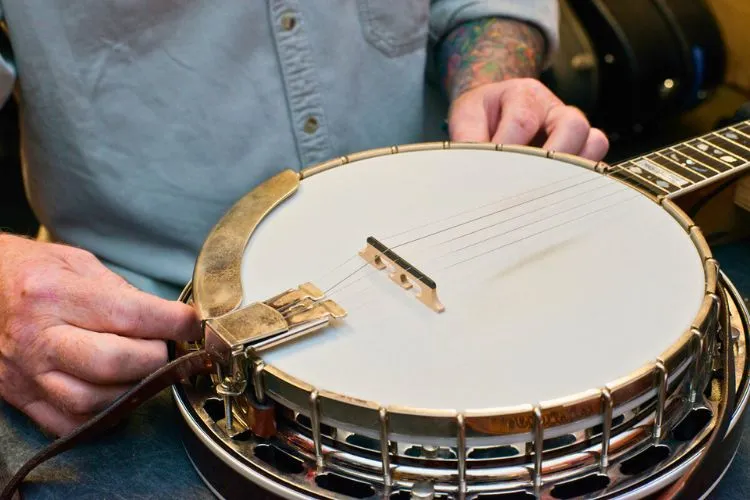
Some beginners might opt for a four-string banjo if they’re more interested in jazz, Celtic music, or early 20th-century music. For those transitioning from the guitar to the banjo, a six-string banjo might be a convenient choice because it can be tuned and played like a guitar. Remember, the choice largely depends on personal music preferences.
🎶What is a small 4 string banjo called?
A small 4-string banjo is called a “tenor banjo.” The tenor banjo originated in the early 20th century and gained popularity in jazz and dance bands. It has a shorter scale length than its larger counterparts, like the plectrum banjo. Tenor banjos are typically tuned in either standard tuning (C-G-D-A) or “Irish” or “GDAE” tuning, an octave below a viola or mandolin.
This versatility and range make the tenor banjo suitable for various musical styles, including jazz, Dixieland, traditional Irish music, and folk. With a bright, snappy tone and a compact size, the tenor banjo is a convenient and versatile instrument for beginners and experienced players.
🎶What is a 5 string banjo called?
A 5-string banjo is typically just referred to as a “banjo” in everyday language because it is the most common type. The fifth string, shorter than the other four and starting from the fifth fret, creates the iconic, high-pitched drone sound that people often associate with banjo music.
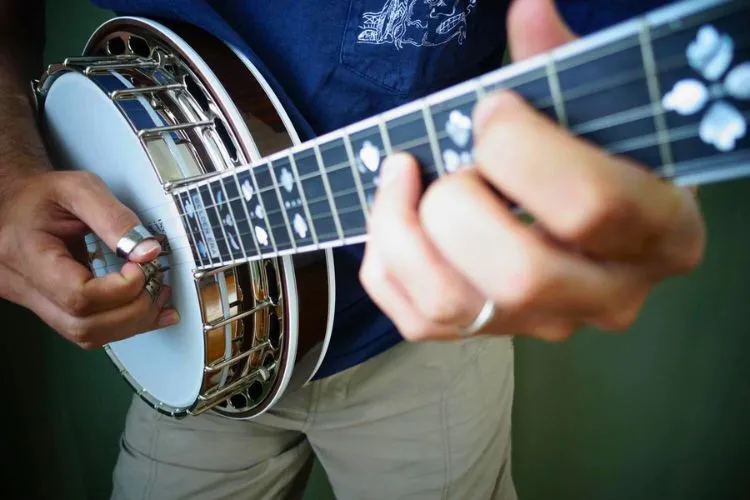
The 5-string banjo is the go-to choice for many Bluegrass, Folk, or Country musicians and has been a cultural cornerstone of Appalachian music in the United States.
There are several types of 5-string banjos, including the open-back banjo popular in traditional old-time music or the resonator banjo often used in bluegrass for louder and brighter sounds. Each variant imparts a unique tonal flavor, showing the diversity and versatility of the 5-string banjo.
You may also read: Ukulele vs Banjo: Which One Is Easier to Master?
🎶What is an 8 string banjo called?
An 8-string banjo is not a common configuration in the world of banjos, but it is referred to as an “octave mandolin banjo” or “banjo-mandola.” This hybrid instrument combines features of both a traditional banjo and an octave mandolin, resulting in a unique sound. These banjos provide a rich, resonant tone with the distinctive twang of a banjo while closely resembling the mandolin family.
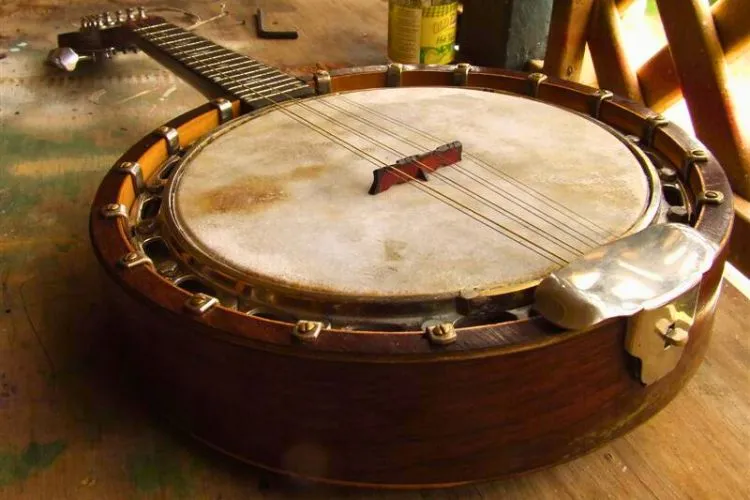
The 8-string banjo-mandola is commonly tuned in G-D-A-E, similar to a mandolin but an octave lower. The instrument gained popularity in the early 20th century, particularly in the Irish traditional and folk music scene. Today, these banjos are considered rare and unique instruments with a niche appeal, attracting musicians who enjoy experimenting with different textures and sounds.
🎶Should I buy a 4 or 5 string banjo?
The choice between a 4-string and a 5-string banjo depends largely on the musical style you aim to play and any previous musical skill and experience you may have.
A 5-string banjo, with its iconic high-pitched drone sound provided by the shorter fifth string, is the most traditional form of the banjo and is most commonly used in bluegrass, folk, and old-time music. If you’re interested in these genres or would like to play in a “clawhammer” or “Scruggs” style, a 5-string banjo would be a good choice.
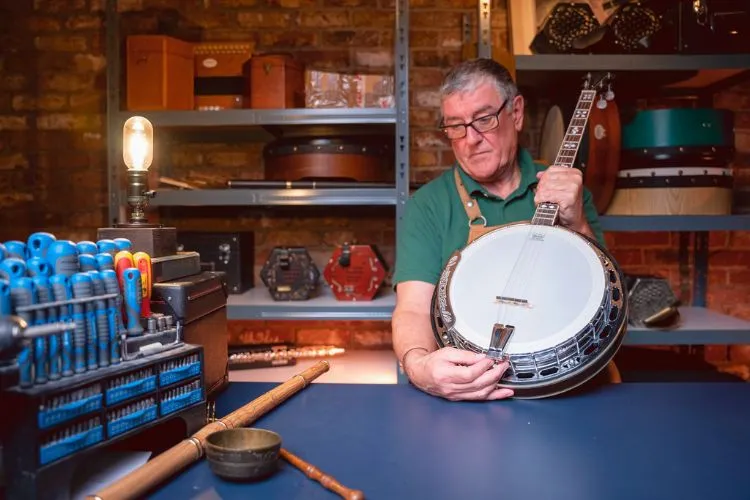
On the other hand, the 4-string banjo, commonly known as the tenor banjo, is typically used in traditional Irish music, jazz, and early 20th-century style music. If you’re a beginner, the tenor banjo might be easier to start with due to its fewer strings. If you’re a proficient guitar, violin, or mandolin player, you may find the 4-string banjo’s layout and tuning familiar and easier to adapt.
Ultimately, the decision should be based on the style of music you want to play and the instrument that feels most comfortable in your hands. Trying out both instruments, if possible, before making a decision is always a great idea.
🎶Is there a 10 string banjo?
Yes, there is a 10-string banjo called the Gold Tone BG-10. This unique instrument features strings arranged in pairs, with unison strings on the first, second, and fifth strings and octaves on the third and fourth strings.
The 10-string banjo has a loud and penetrating tone with added sustain caused by the extra strings2. The BG-10 can be considered a 12-string guitar but in banjo form. It is suitable for banjo players familiar with the 5-string banjo, as the fingerings are the same.
It’s worth noting that the Gold Tone BG-10 is less common compared to traditional 4-string or 5-string banjos. However, the unique sound and configuration make it appealing for musicians who want to experiment or stand out.
Conclusion:
While the number of strings on a banjo can range from four to six or even ten, the most common variant is the 5-string banjo. With its unique and versatile sound, the 5-string banjo has captured the hearts of musicians worldwide, becoming a staple of bluegrass, folk, and Old-time music.
Nevertheless, other types, like the 4-string tenor banjo, have unique strengths and specific applications, such as in traditional Irish music and jazz. As a potential banjo player, you can explore the wide range of banjos available and select one that aligns best with your musical preferences and goals.
